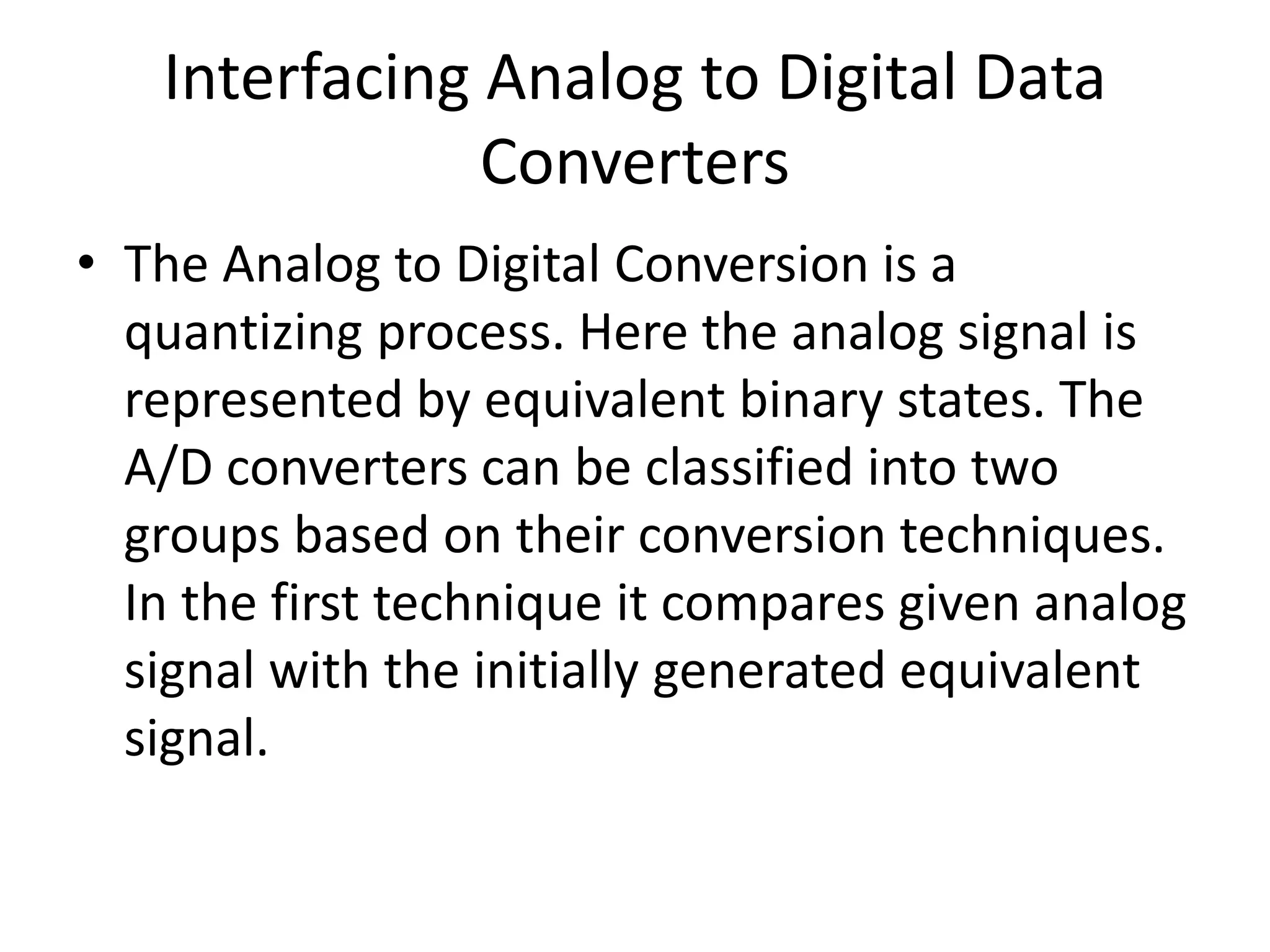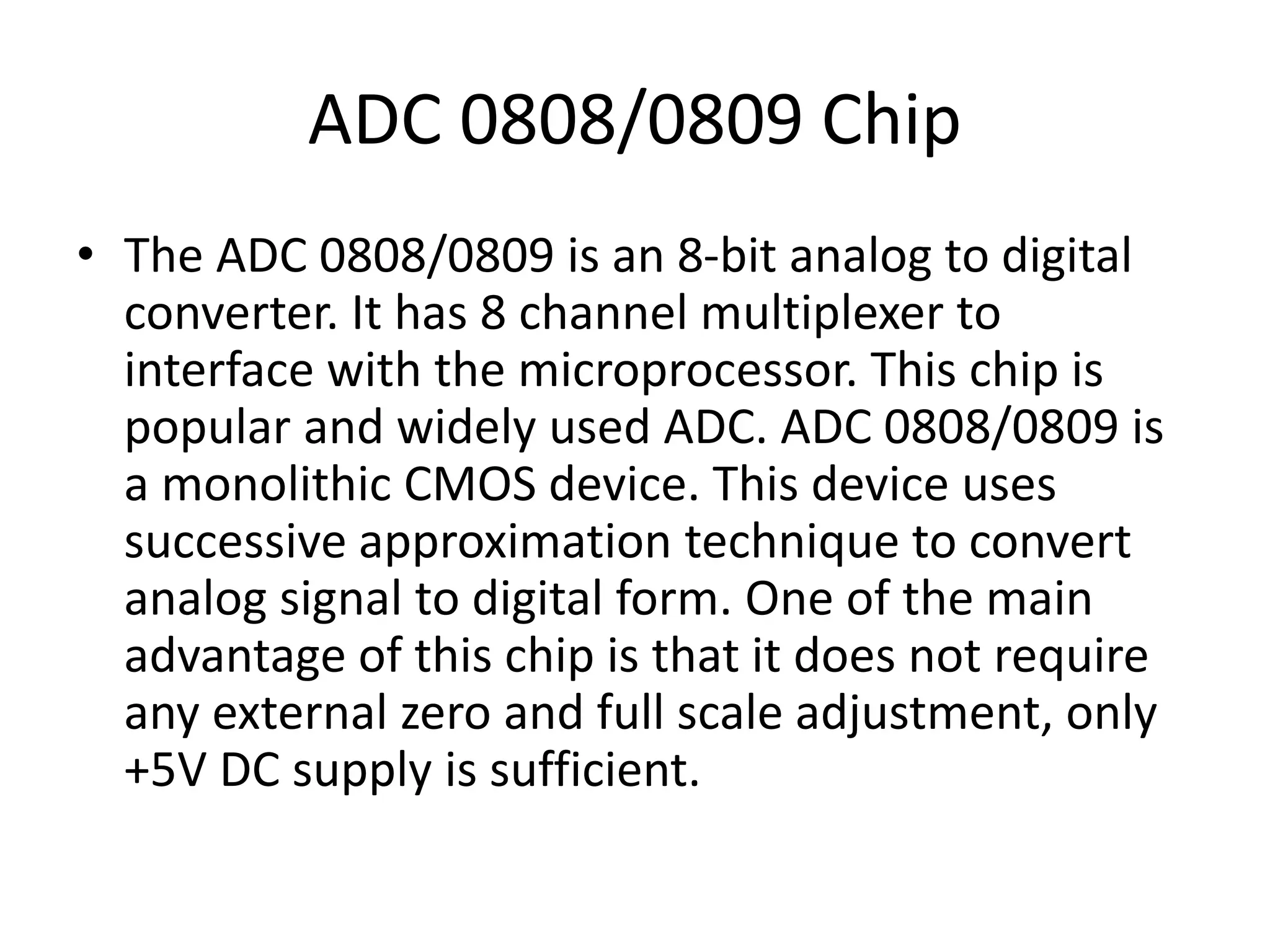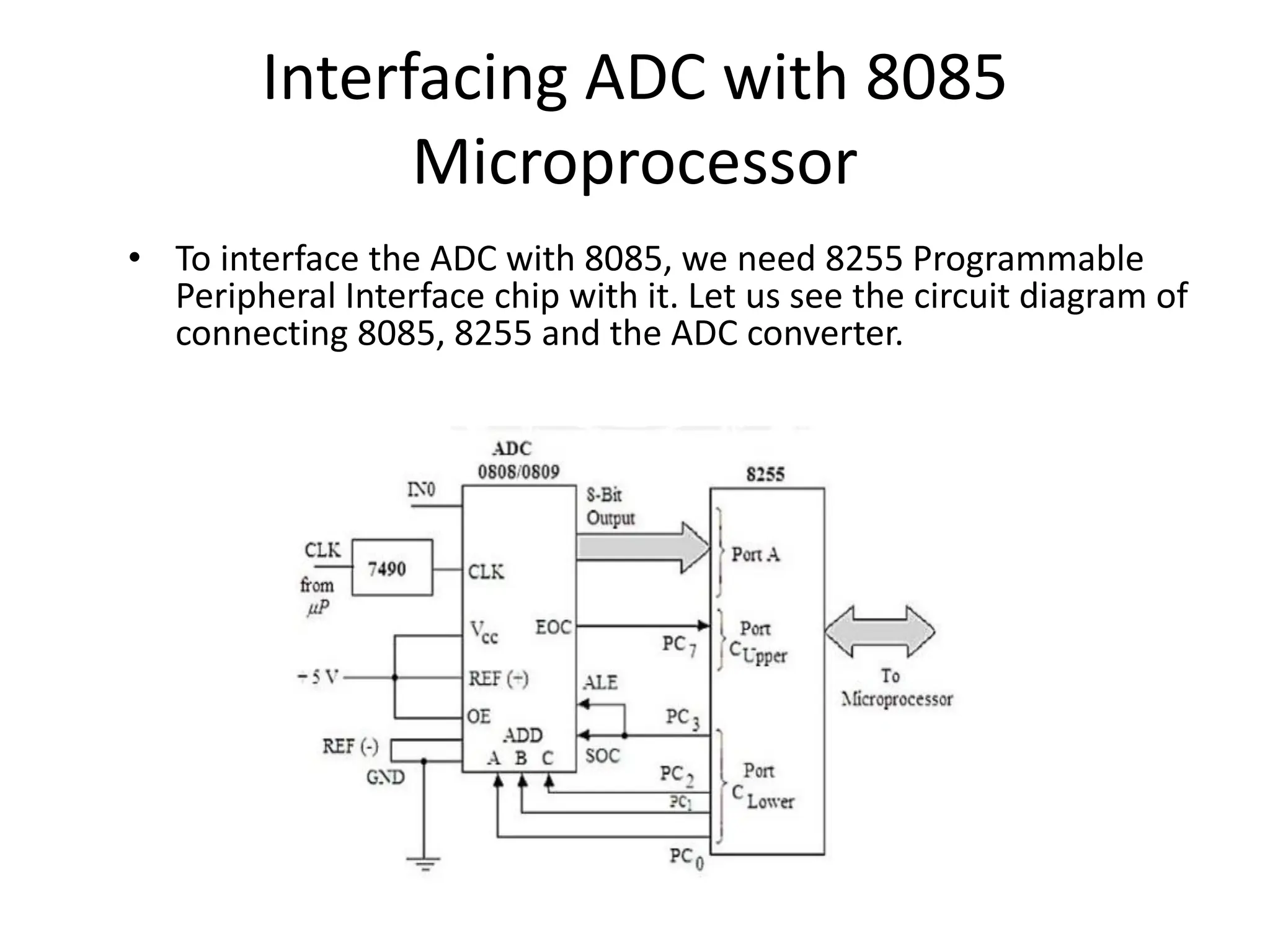The document discusses analog to digital converters (ADC) and digital to analog converters (DAC), detailing their conversion processes, types of devices such as the ADC 0808/0809 and DAC 0800, and interfacing with microprocessors. It highlights the advantages of the ADC 0808/0809, including high conversion speed and accuracy, and describes the 8254 programmable interval timer's operation, modes, and programming procedures. Additionally, it explains the interfacing requirements for these components with microprocessor systems.



















